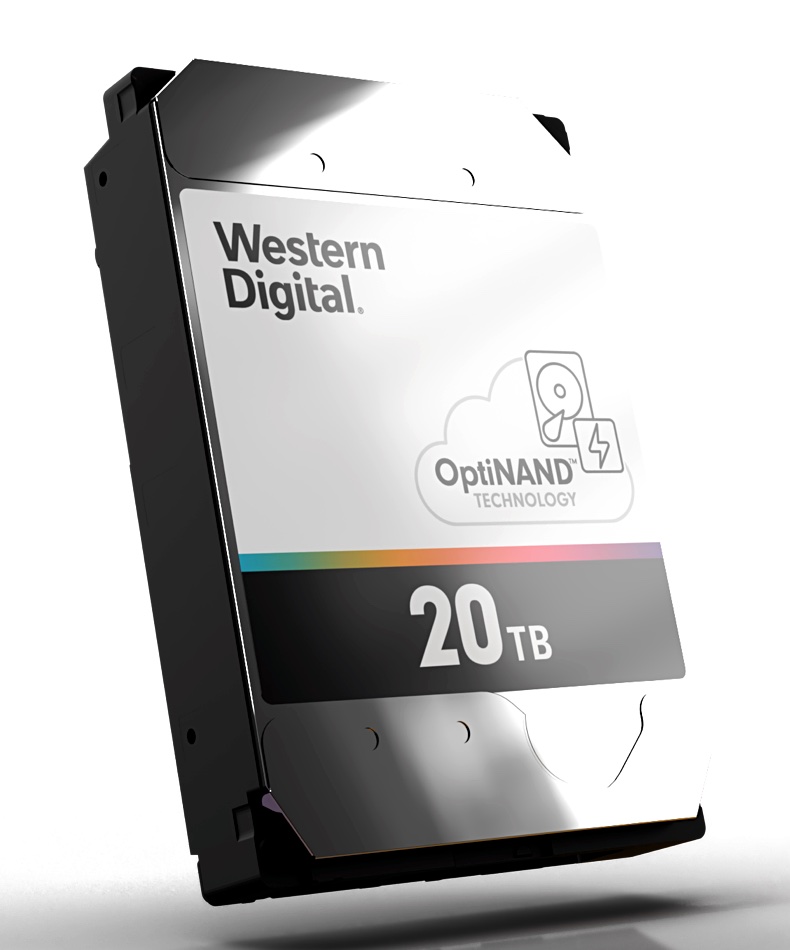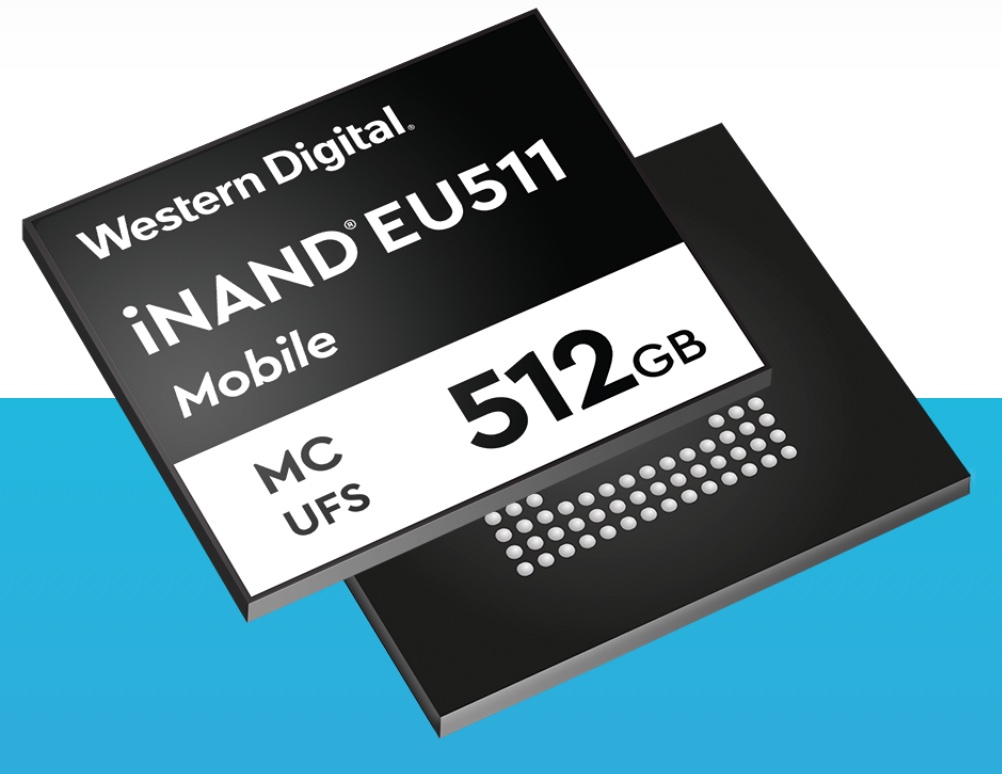Western Digital has added a metadata-storing thumbnail-sized flash drive to the controller of a disk drive and increased its overall capacity and speed. It says a 50TB drive using this OptiNAND technology could ship between 2025 and 2030, without using MAMR technology.
A sample 20TB OptiNAND drive is shipping, and WD says OptiNAND will be used in all its disk drives in the future.
Ed Burns, research director for hard disk drives at IDC, supplied an announcement quote: “As the only company manufacturing both flash and HDDs, Western Digital can uniquely leverage their in-house capabilities to extend the areal density curve of ePMR drives for generations to come, helping customers meet the growing demands of a digital economy.”

Background
The ePMR technology adds a bias current to the write head when writing to improve the overall write signal strength and push the limits of current perpendicular magnetic recording (PMR) technology further. It had been thought that PMR technology would hit a wall around the 16–18TB capacity level (9x 2TB platters) and need to be replaced by energy-assisted recording, specifically Microwave-Assisted Magnetic Recording (MAMR), which involves adding a microwave generator to the read/write head and so enabling smaller bits to be written which would maintain their magnetic setting over time.
Seagate has an alternative Heat-Assisted Magnetic Recording (HAMR) technology which achieves the same end. WD has used an interim enhance PMR (ePMR) to extend conventional PMR technology to the 18TB level, with its Red NAS Pro, Gold and Purple drives.
It had used the write speed-sapping shingled magnetic recording (SMR) technology, in which zones on the drive feature more closely packed tracks, erased and rewritten as a group, in its 20TB DC H650 drive. This features nine internal platters.
The iNAND addition
But now WD has found a way to extend ePMR technology to 20TB without using shingling.
It is adding an iNAND embedded flash drive to the System-on-Chip (SoC)-based disk drive controller and storing disk drive metadata in that instead of on the actual disk drive platters.

For example, repeatable runout (RRO) metadata refers to a position error signal for every disk spindle rotation and that is now stored in the iNAND.
This means the controller can access the metadata faster, and that the metadata space on the disk drive platters can now store users’ data instead, increasing its capacity.
The drive controller firmware uses the iNAND to enable additional features. A WD tech brief states: “Write operations are recorded to reduce adjacent track interference (ATI). In prior generation HDDs, write operations were recorded at the track level, while refreshes were done for entire tracks. OptiNAND records write operations in iNAND at the sector level. This metadata is used to refresh sectors instead of whole tracks. Eliminating excess refreshes allows tracks to be placed closer together without performance loss.”
Also, there is now less need for frequent write cache flushes in write cache-enabled mode and this improves drive latency due to reduced background operations.
The sample 20TB drive has 9x 2.2TB platters, making it a 19.8TB drive in actuality. Simply put, the iNAND use adds ten per cent extra capacity to what was an 18TB drive (9x 2TB platters).
The OptiNAND tech can save more than 100MB of write cache data flushed into the NAND during an emergency power-off (EPO) event. Without it only around 2MB could be saved. The tech brief says: “With the capacity to store more than 100MB of data during EPO, random write performance in write cache disabled (WCD) mode can approach that of write cache enabled (WCE) mode.”
Future and comment
WD’s tech brief says: “OptiNAND technology will extend the capability of energy-assisted PMR (ePMR) for multiple generations, allowing customers to continue benefiting from a proven recording technology.” The announcement slide deck said: “As a result, we expect an ePMR HDD with OptiNAND to reach 50TB [in] the second half of this decade.”
WD’s announcement slide deck also said there will be: “Additional enhancements for shingled magnetic recording (SMR) for those customers and applications that adopt SMR.” We have no details of what these might be but assume both capacity and speed improvements will be possible. A previous 20TB SMR drive might become a 22TB SMR drive using OptiNAND tech.
It seems clear to us that all the existing WD 18TB drives will be updated to 20TB capacity drives in the next few quarters. Secondly, WD now has no need to go the expense of using MAMR technology until, probably, the second half of the decade.
We think that WD’s cost of goods (COGs) for its OptiNAND ePMR drives should be lower than MAMR drive COGS, and also lower than Seagate’s HAMR drive COGs. Unless Seagate can come up with its own flash-enhanced drive controllers it will be at a pricing disadvantage. Ditto Toshiba with its own MAMR technology.
"Flash" - Google News
September 01, 2021 at 05:19PM
https://ift.tt/3zE0Vfh
WD improves disk capacity in a flash; MAMR delayed – Blocks and Files - Blocks and Files
"Flash" - Google News
https://ift.tt/39L7UpV
Shoes Man Tutorial
Pos News Update
Meme Update
Korean Entertainment News
Japan News Update
Bagikan Berita Ini














0 Response to "WD improves disk capacity in a flash; MAMR delayed – Blocks and Files - Blocks and Files"
Post a Comment